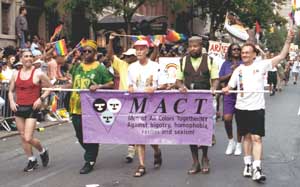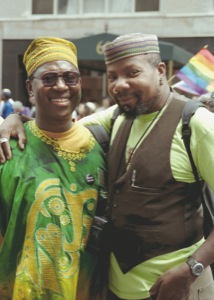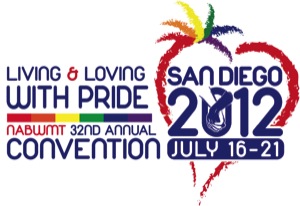
We get it. Millennials, those born roughly between 1983 and 2001, thunderously approve of same-sex marriage. Poll after poll after poll indicates that the generation that enters the last year of its 20s this year not only endorses the civil rights of same-sex couples, but has claimed the revelation of its position as its very own ‘Selma’ moment. And thanks to this generation of young people, the debate has quickly turned from ‘if’ to ‘when.’ Or as Harvard Supreme Court scholar, Laurence H. Tribe succinctly noted in the New York Times recently, “The constitutional necessity of same-sex marriage is only a matter of time. It is inevitable.”
But when that very same sense of civil and judicial outrage turns to matters racial, something flounders. Somewhere along the march to progress, young gay men and women have pulled back the spigot on equality and have chosen, subconsciously or not, to ignore the undercurrents of racism that exist even in the LGBT community.
And the evidence is everywhere. From the lack of leadership roles being filled by people of color in gay civil rights organizations, to the underreporting of issues of importance in communities of color . Racism is alive and well. One need only glance at mobile hook-up sites like Grindr and Adam4Adam where “whites only, just a preference” or “no Asians” reminds each and every one of us that “the tireless exertions and passionate concern of dedicated individuals,” as Mr. King once remarked, is required from each and every one of us if we are to get past the racial barriers. Thi may be, especially true in the LGBT community.
For all the talk of how far we’ve come in the last ten or so years in the fight for LGBT rights, it’s fairly remarkable how few steps our community has taken on the racial front.
So, when the National Association of Black and White Men Together (NABWMT), a group whose consciousness-raising goals have been arguably unmet, meet for their 32nd annual convention here in San Diego this July, one of the questions that must be asked is why. after three decades of enormous progress on LGBT civil rights, is the HIV/AIDS battle in the black gay community barely a blip on our cultural radar, at the same time the appearance of Chaz Bono on ABC’s Dancing With The Stars gets the sort of press normally reserved for kings and presidents?

NABWMT, a 32-year-old organization, founded by the long deceased Michael Smith, originally began as the National Association of Black and White Men Together. It evolved over time with many of its chapters opening as Men of All Colors Together to reflect each of the chapters’ various demographic realities (there are even People of All Colors Together groups, which include women.) Still, the organization has largely remained intact through some 20 chapters spread throughout the United States (from a high of somewhere in the neighborhood of 35-40 groups “back in the day.”) “The movement started back in 1980. It was started as a result of groups involved in interracial relationships. Groups were starting throughout the United States but primarily predominantly in San Francisco and New York,” recalls James Credle, a former chair and board member. “[At the time], the groups were primarily interested in black and white dating and homosexuality and trying to make their relationships work.
That was May 1980. Later in the year, they met and decided to form a national organization. Its purpose was to work against the racism, sexism and homophobia in the community and in our lives. And in doing that we had hoped to build better cross-racial relationships.”
In theory, at least, that was the plan. But as time marched on, James began to notice that fault lines were developing. “In New York, we were what one might describe as more ‘political’ about our work and in San Francisco they decided they wanted to have a more social relationship and not deal with the politics of [interracial dating]. That became a dynamic that has lasted until today.”
But if the groups were divided by more than just a continent, Credle points out that the core fundamentals were in place to address those issues that still resonate with us today. “The primary thing that happened in the ’80s, which continues to be the reason why people come to the meetings, was we had consciousness-raising sessions in which we talked about real issues facing men in relationships, particularly men from different ethnic groups; and this was one of the primary things that drew people to the organization. We talked real. It was heavy-duty dialog and discussion around race and the politics of being homosexual, as black, as white and as you are trying to come together in a relationship.”
Still, the intergroup dynamics continue to this day, as they do among any organization. A bigger, perhaps more vexing issue is, who is coming up through the ranks to fill the leadership roles? Can a generation raised on virtual networks and emoticons be counted on to do the organizational lifting that is required of any group if it is to move forward into the future? And, more importantly, are groups like these still relevant to a generation that, by many accounts, finds the concept of physical interaction something of a quirk in human interaction?

“We do it electronically, by word of mouth, by publications, by blogging, by Facebook,” Ken Baron, the national co-chair of the organization explained over the phone from Long Beach, somewhat circumspectly. “Have you seen our Web site? You’ll see we have a variety of answers to your questions.” Answers, yes, but for today’s 35-and-unders (a demographic one might argue is the key to their future), are the questions those answers providing even being raised? Moreover, are they even still relevant? Ken adds, “We’re evolving our relations. Our demographics, like any other organization, shift with the years. Are we getting younger people below 30? Not that many. Are we getting people below 40? Yes. 50 to 60? Yes. So, I don’t know if we target these things but at every new convention we get between 20-25 percent of new people.”
But the question that begs asking is, however, how are you reaching out to new people that aren’t already disposed to a colorblind society? How do you convince people who have already formed preconceived ideas in their head – “whites only, just a preference” – that interracial and interethnic relationships often result in unexpectedly rich cultural tapestries emotionally, intellectually and spiritually?
The annual conference itself will be held at the San Diego Convention Center beginning Monday, July 16 and running through Saturday, July 21. Throughout the week the national leadership will provide conferences, workshops, luncheons and single-mingle dating events (including a social mixer at popular gay club Pecs, Wednesday night). The week will cap off with the organization’s keynote speaker Saturday night, the 15th surgeon general of the United States, Dr. Jocelyn Elders.
For more information about The National Association of Black and White Men Together, the convention, activities or how to become a member, visit their Web site at nabwmt.org.











Excellent issues altogether, you just won a new reader. What might you suggest in regards to your publish that you simply made some days ago? Any positive?